|
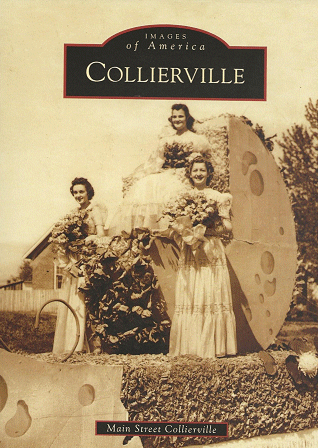
From the pages
of Collierville by Main Street Collierville
Images Of America Series, 2006
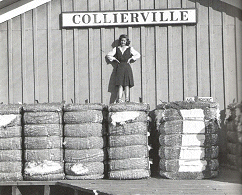 With its Downtown a jewel
of Victorian-era homes and old churches
surrounding a historical town square,
Collierville, Tennessee, retains a
small-town charm that keeps longtime
residents rooted and draws increasing
numbers of new citizens yearly. Mild soil
and its location between the Wolf River to
the north and the Nonconnah Creek to the
south helped establish the town as an
agricultural trade center for cotton and,
later, the dairy With its Downtown a jewel
of Victorian-era homes and old churches
surrounding a historical town square,
Collierville, Tennessee, retains a
small-town charm that keeps longtime
residents rooted and draws increasing
numbers of new citizens yearly. Mild soil
and its location between the Wolf River to
the north and the Nonconnah Creek to the
south helped establish the town as an
agricultural trade center for cotton and,
later, the dairy industry. Once a stagecoach
rest stop and later a railroad stop on the
Memphis and Charleston line, the town
anchors the southeast corner of Shelby
County, lying about 30 miles east of Memphis
and the Mississippi River. The Union army
recognized the importance of the town’s
location during the Civil War. Battles to
take the town were waged on both sides, and
in one battle, Maj. Gen. William Tecumseh
Sherman escaped capture at Collierville
Depot. industry. Once a stagecoach
rest stop and later a railroad stop on the
Memphis and Charleston line, the town
anchors the southeast corner of Shelby
County, lying about 30 miles east of Memphis
and the Mississippi River. The Union army
recognized the importance of the town’s
location during the Civil War. Battles to
take the town were waged on both sides, and
in one battle, Maj. Gen. William Tecumseh
Sherman escaped capture at Collierville
Depot.
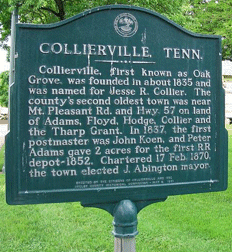 The name and even Collierville’s home state
were in question at various times throughout
the 19th century. Jesse R. Collier, a local
real estate entrepreneur, advertised lots
for sale in the Memphis Enquirer as “The
Town of Collier” in 1836. Even after its
first formal incorporation in 1850, the town
was also known as Oak Grove and mistakenly
referred to as “Colliersville”. Lands that
lay south of the Stateline Road (Poplar
Avenue) remained in Mississippi until 1838.
In 1858, the population was recorded around
250. There were common schools, funded by
local property taxes, and two private high
schools, one for boys and one for girls. A
coeducational school was available for
younger children, and settlers had the
choice of four churches to attend:
Methodist, Baptist, Presbyterian, and
“Campsettlers” (Christian). By 1860, the
population had doubled. There were three
general stores, three grocery stores, one
flouring mill, one hotel, and other
professions. The name and even Collierville’s home state
were in question at various times throughout
the 19th century. Jesse R. Collier, a local
real estate entrepreneur, advertised lots
for sale in the Memphis Enquirer as “The
Town of Collier” in 1836. Even after its
first formal incorporation in 1850, the town
was also known as Oak Grove and mistakenly
referred to as “Colliersville”. Lands that
lay south of the Stateline Road (Poplar
Avenue) remained in Mississippi until 1838.
In 1858, the population was recorded around
250. There were common schools, funded by
local property taxes, and two private high
schools, one for boys and one for girls. A
coeducational school was available for
younger children, and settlers had the
choice of four churches to attend:
Methodist, Baptist, Presbyterian, and
“Campsettlers” (Christian). By 1860, the
population had doubled. There were three
general stores, three grocery stores, one
flouring mill, one hotel, and other
professions.
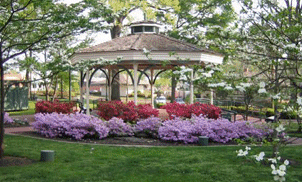
Much of the town was destroyed during the
Civil War, but the town sprung back in 1866
around a park that was designated as a
“public square.” For a time, the park served
as an erstwhile zoo with a deer and peacocks
contained within a white picket fence. In
1876, a two-story bandstand brought music
fans to the town’s heart, just as a
bandstand does today for spring and summer
concerts and several festivals and
celebrations. More than 42,000 people now
call Collierville home. The town covers
18,500 acres, with another 13,700 acres in
reserve for future use. A thriving business
community includes antique and specialty
shops and unique restaurants in addition to
larger retail venues and nationally known
restaurants. As urban expansion approaches
from metropolitan Memphis, the community
leaders and citizens strive to maintain and
protect the town’s unique history, its
values, and personality.
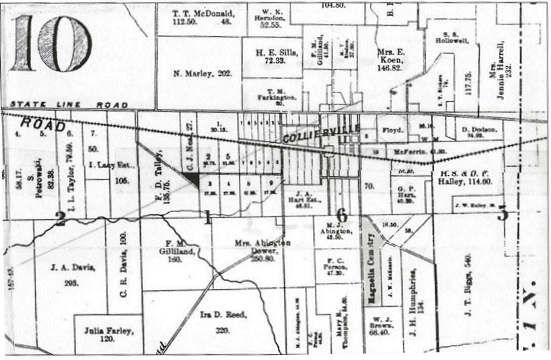
“If a community preserves the integrity of
its heritage,
that heritage will in turn preserve the
integrity of the community.”
From Parade magazine, in 2014 . . .
America's Best Main Street: And the Winner
Is.... COLLIERVILLE !!
After Parade readers nominated more than
2,000 Main Streets, editors selected 16
based on the criteria for a successful
downtown, according to our research. Then in
June, readers voted for their favorites in a
bracket on parade.com.
Congratulations To Our Winner: COLLIERVILLE,
TENNESSEE!
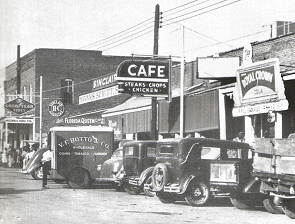 Start your day by the old train depot in
this town (pop. 47,333) outside Memphis and
you’ll likely meet Joseph Johnson, who
peddles produce from the back of his van. ★
“This has always been a nice town, with nice
people,” he will tell you, and he’d know:
The lifelong resident has a front-row seat
on the Collierville square, a picturesque
park at the heart of the community. In the
summer, neighbors gather here around a
gazebo for free concerts. ★ Local pride
springs from the town’s rich history (as a
trade center for cotton, and later, a
cheese-making capital) but also its
promising future: Since the 1990s, the
population has Start your day by the old train depot in
this town (pop. 47,333) outside Memphis and
you’ll likely meet Joseph Johnson, who
peddles produce from the back of his van. ★
“This has always been a nice town, with nice
people,” he will tell you, and he’d know:
The lifelong resident has a front-row seat
on the Collierville square, a picturesque
park at the heart of the community. In the
summer, neighbors gather here around a
gazebo for free concerts. ★ Local pride
springs from the town’s rich history (as a
trade center for cotton, and later, a
cheese-making capital) but also its
promising future: Since the 1990s, the
population has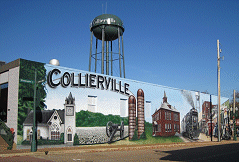 tripled as corporations like
FedEx have moved into town; and the ¬local
economy is thriving. A law office operates
near a yoga studio and a brick-walled
service station. At Dixie Pickers, you can
shop for seersucker, bow ties, and fishing
apparel. And over at the Silver Caboose
Restaurant, diners catch up with the owner
over pimento cheese sandwiches. ★ But the
success of downtown is no accident. Laura
Todd, executive director of a local civic
group, credits a roster of programs that
promote smart development. “We have great
character and characters here,” she says.
“Collierville makes you feel at home. It
really does.” tripled as corporations like
FedEx have moved into town; and the ¬local
economy is thriving. A law office operates
near a yoga studio and a brick-walled
service station. At Dixie Pickers, you can
shop for seersucker, bow ties, and fishing
apparel. And over at the Silver Caboose
Restaurant, diners catch up with the owner
over pimento cheese sandwiches. ★ But the
success of downtown is no accident. Laura
Todd, executive director of a local civic
group, credits a roster of programs that
promote smart development. “We have great
character and characters here,” she says.
“Collierville makes you feel at home. It
really does.”
From the Morton Museum . . .
COLLIERVILLE, THE DAIRY TOWN
FROM COTTON TO COWS
A few years prior to 1929, Collierville’s
“king cotton” image began to change when the
boll weevil (a beetle that feeds on
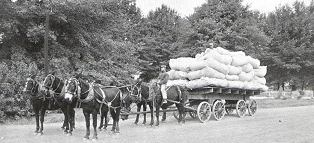 cotton
buds and flowers) visited the area. Before
that time, there were only a handful of
dairies in operation. By 1929, however, the
number had dramatically increased to several
hundred, both large and small. One can see
the importance of the emerging dairy
industry in the newspaper in the numerous
articles, advertisements, and stories in the
local society section. cotton
buds and flowers) visited the area. Before
that time, there were only a handful of
dairies in operation. By 1929, however, the
number had dramatically increased to several
hundred, both large and small. One can see
the importance of the emerging dairy
industry in the newspaper in the numerous
articles, advertisements, and stories in the
local society section.
Collierville was just one of many towns in
the area where dairying was booming. There
were hundreds of dairies providing milk to
Memphis. In 1922, the Guernsey Breeders’
Journal reported, Collierville resident Jack
Clayton (below) “probably has the largest
herd of Guernsey in Tennessee.” In January
1922, Clayton was elected vice president of
the Tri-State Guernsey Cattle Club.
LIFE ON A DAIRY FARM
Before a farmer was permitted to sell or
distribute milk to a pasteurization plant,
they had to receive a permit from the Shelby
County Department of Health and submit to a
rigorous inspection process. Farmers were
required to test all dairy cows for
tuberculosis and dairy stables, equipment,
the people engaged in milking were subject
to detailed rules to ensure safe and high
quality milk.
COLLIERVILLE CELEBRATES DAIRY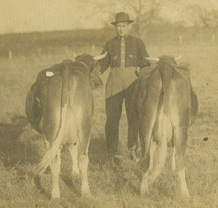
Citizens, businesses, and civic
organizations came together to celebrate the
emerging, and soon thriving, dairy industry
in Collierville in the 1930s. The local
Rotary Club, organized in 1935, actively
sought to bring dairy cow livestock shows to
Collierville and promoted the Cheese
Carnival to support the area’s dairy
industry.
The Cheese Carnival held on Town Square
lasted several days, complete with a queen
and her court, band concerts, dances,
parades, and a carnival atmosphere
throughout the Town. The first Cheese
Carnival in 1934 drew 12,000 to 18,000
people, “the largest number ever to visit
Collierville in a single period.”
CHEESE PLANT ON MAIN STREET
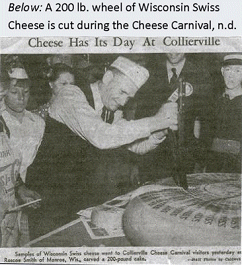 Swift and Company, a food processing company
incorporated in Chicago in 1875, specialized
in meatpacking and sold dairy and grocery
items across the country. In 1934, they
opened a cheese plant located just off Main
Street in Collierville. Swift and Company, a food processing company
incorporated in Chicago in 1875, specialized
in meatpacking and sold dairy and grocery
items across the country. In 1934, they
opened a cheese plant located just off Main
Street in Collierville.
Upon opening, a resident and dairy farmer
commented on what it meant for the plant to
be in Collierville, stating, “Our town is
forgetting the Depression and swinging into
the new deal with hearts set on a glorious
and prosperous future.”
Swift and Co. closed its doors in 1943 due
to World War II, electricity costs, and
internal company problems. In October 1944,
local businessmen reopened the Collierville
Dairy Products Company to “begin our own
little post-war employment plan right here
in Collierville.” The plant moved to Olive
Branch, Mississippi, in 1952.
Newspaper articles show us that the Cheese
Plant went through many ups and downs during
its existence. Local headlines follow the
Cheese Plant’s highs and lows.
DAIRY FARMS IN AND AROUND COLLIERVILLE
From the early 1920s to the 1980s, dairy
remained an important feature of many
Collierville families. Today, there are
about 51,000 dairy farms in the United
States and almost all of them are family
owned and operated
.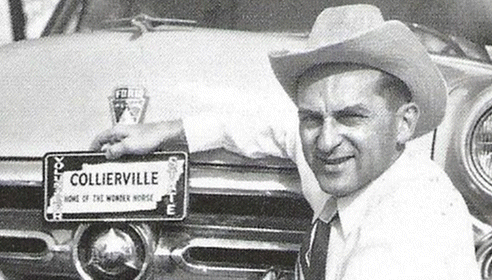
THE WONDER HORSE FACTORY
What’s a Wonder Horse?
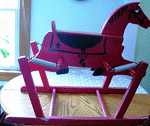 The World Famous Wonder Horse was made in
the The World Famous Wonder Horse was made in
the 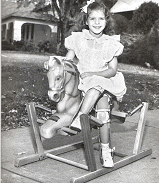 Wonder Products factory of Collierville
from 1950 to 1983. First built of wood, and
then cast more realistically in plastic,
these were child-size horses, mounted on a
wooden or metal frame, and suspended by
springs that gave them their rocking motion.
In the 1950s and 1960s, it seems every kid
in America had — or wanted — one. Wonder Products factory of Collierville
from 1950 to 1983. First built of wood, and
then cast more realistically in plastic,
these were child-size horses, mounted on a
wooden or metal frame, and suspended by
springs that gave them their rocking motion.
In the 1950s and 1960s, it seems every kid
in America had — or wanted — one.
These popular toys were manufactured in a
cluster of factory buildings just a block
south of Collierville’s Historic Town
Square. The firm closed in 1982.
For current information about
Collierville,
please visit the official website:
https://collierville.com
Or, at Main Street
Collierville:
www.mainstreetcollierville.org
Or, at the Morton Museum:
www.colliervillemuseum.org
and /or on Facebook:
https://www.facebook.com/townofcollierville
Collierville by Main Street Collierville, Images Of America Series
|